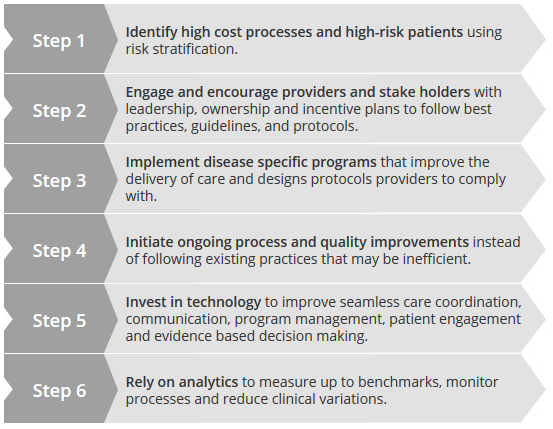Variation in clinical processes, care standards and medical practice is a truth that continues to exist despite the availability of sophisticated tools and technology. It not only leads to inappropriate utilisation of resources and exaggerated healthcare spending, but also leads to poor quality of care and higher mortality. Though it may be difficult to achieve, it is vital to make ongoing efforts to reduce clinical variation to improve outcomes.
Hospitals are increasingly acknowledging that to provide a high quality of care, reduce costs and lower mortality, there is indeed a need to reduce variation in clinical processes. However, to do so, hospitals need to identify and implement best practices.
It is imperative to identify a set of key metrics, define them appropriately and have “a single view of truth” for each. Data for each metric can then be standardized and risk-adjusted to represent a comparable benchmark parameter for comparison and reporting. Once key metrics and data source are identified, it becomes easier to measure the metrics against industry benchmark and identify gaps if any.
Then comes the next big hurdle. How does one identify industry standards from among several players across a multitude of medical practices? To identify industry benchmarks, hospitals will have to risk-stratify across services, practices and disease. For example, a hospital may stratify across patient population for sepsis, to identify top performing hospitals delivering sepsis care and learn more about the best practices that govern their sepsis programs. The top performers usually have a relatively low variation in clinical processes that is reflected in improved outcomes for sepsis.

A Patient Centered Approach to Care Coordination, April 2014
The use of analytics to gain insights in variation of cost of care is gaining momentum. For example, analytics is being increasingly used to identify the hospitals and physicians who provide better quality of care and improved outcomes, lower mortality, LOS and readmission rates. Hospitals that run similar programs, can gain significant insights on best practices and initiate process improvements to reduce variability and achieve improved outcomes.
What can hospitals do to reduce clinical variation and cost of care?

With value based reimbursement model in place, eliminating variations in care is the next big step hospitals and providers need to take. This will ensure high quality of care without hurting the bottom line.
AcesoCloud Outcome Analytics product helps to understand sepsis programs, monitor processes and reduce clinical variations.

